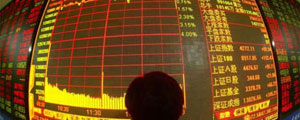
China’s December trade data beat expectations, as demand from a stronger United States economy helped offset weakness in Europe and Japan while Chinese bargain-shopping in commodities markets put a floor under sliding imports.
BEIJING/SHANGHAI REUTERS
December trade data beat expectations, as demand from a stronger United States economy helped offset weakness in Europe and Japan while Chinese bargain-shopping in commodities markets put a floor under sliding imports.
But, while exports grew faster and imports shrank less than forecast, trade officials warned of more headwinds to come in the first quarter. Policymakers are trying to steer the world’s second-largest economy through a soft patch as it confronts weak demand and a slowdown in its property market. Exports in December rose 9,7% from a year earlier in dollar-denominated terms, data from the General Administration of Customs showed yesterday, handily beating a Reuters poll by nearly three full percentage points. Imports dropped by only 2,4%, where analysts’ consensus was for a far steeper decline of 7,4%. Officials were cautious when discussing how much positive momentum trade will deliver.
“We think the negative factors that crimped trade performance in 2014 will be sustained for a period of time,” said Zheng Yuesheng, a spokesman for China’s customs bureau. Zheng was referring to factors such as a weak recovery in the world economy, falling foreign direct investment in Chinese manufacturing and rising domestic production costs.
The smaller fall in imports than in November was largely due to a resurgence in commodity purchases. Zheng noted sliding prices had been a net benefit for the country by reducing import costs. China posted a trade surplus of $49,6 billion for the month, smaller than November’s record $54,5 billion.
China imported 30,37 million tonnes of crude oil in December, or 7,15 million barrels per day (bpd), topping the 7 million bpd mark for the first time, customs data showed, as the world’s largest oil importer took advantage of low global prices to fill its strategic reserves. It also purchased a record high volume of iron ore. However, falling commodity prices have proven to be a net negative for Chinese industrial profits, and analysts warned that investors should not read too much into the recovery in imports.
“The jump in commodities imports was a big boost to overall trade figures, (but) is not a reflection of underlying demand,” said Nelson Wang, an energy analyst at CLSA Research.
- Chamisa under fire over US$120K donation
- Mavhunga puts DeMbare into Chibuku quarterfinals
- Pension funds bet on Cabora Bassa oilfields
- Councils defy govt fire tender directive
Keep Reading
During 2014, China’s total trade value increased by 3,4% from a year earlier, short of the official target of 7,5%. “Today’s data means China’s export sector remains one of the world’s best performing,” wrote Julian Evans-Pritchard, China economist at Capital Economics, in a research note.
“Although the global economy remains fragile, we nonetheless expect growth in many of China’s key export markets, such as the US, to stage a slight recovery this year, which should provide support to Chinese exports.”
But he added that “those anticipating a stimulus driven pick-up in investment or a marked turnaround in the property sector will be disappointed.” China, due to release GDP data for the fourth quarter next week, has been long awaiting a turnaround in imports, which would show a recovery in domestic demand. Economists believe full-year growth may undershoot the government’s 7,5% target, the weakest expansion in 24 years. Stock markets barely reacted to the data, with the CSI300 Index of the major listed companies in Shanghai and Shenzhen closing flat. Spot yuan ticked up slightly to close at 6,1983 per dollar, but demand for the currency has flagged in the face of an ascendant dollar.
“The continuous appreciation of the U.S dollar since October had a smaller-than-expected impact on China’s exports; the depreciation of the yuan since late November also contributed to it,” Nie Wen, economist at Hwabao Trust in Shanghai said, adding that he expected China’s 2015 exports to be depressed by offshore currency movements. “Monetary authorities are very likely to engineer a periodic depreciation of the yuan if the next export figure is sluggish.”











